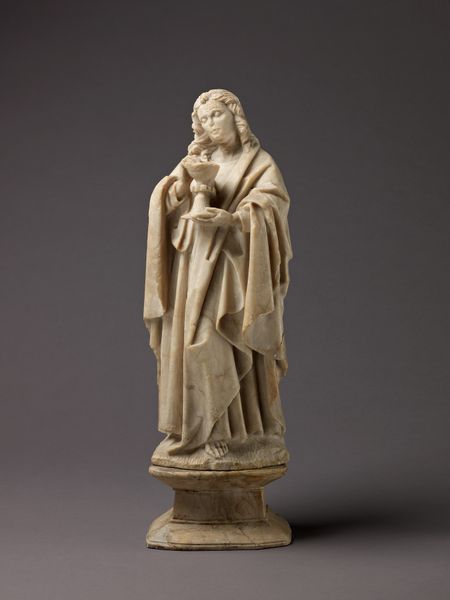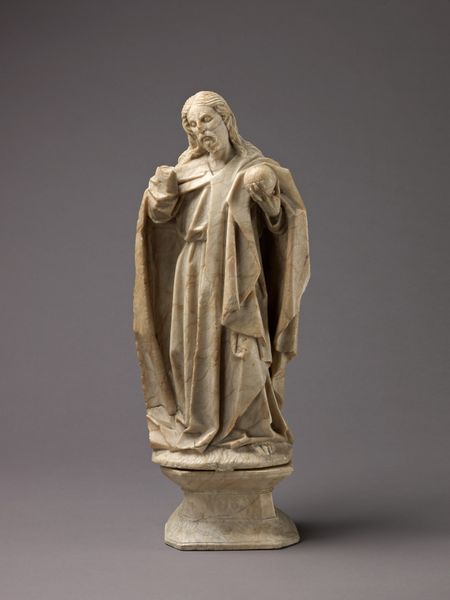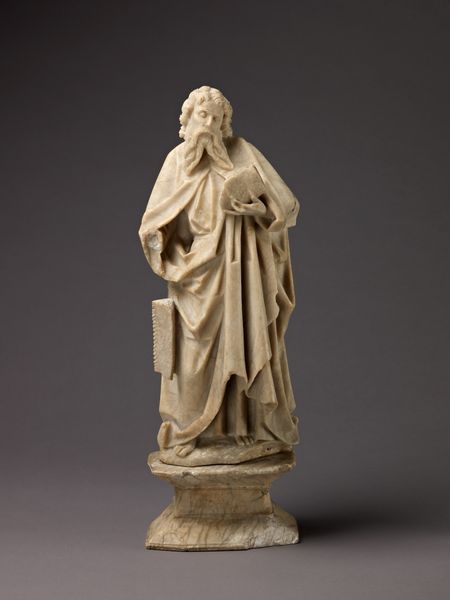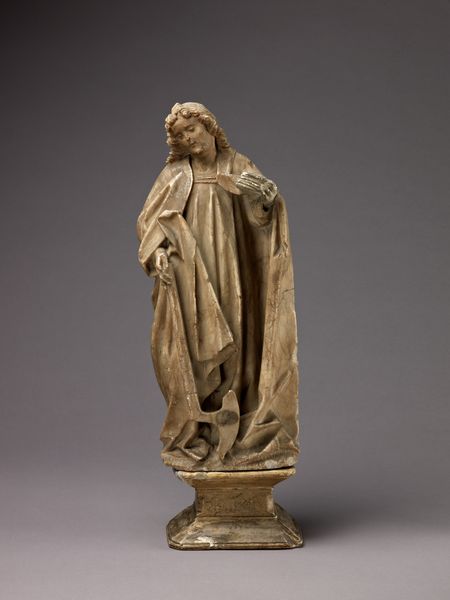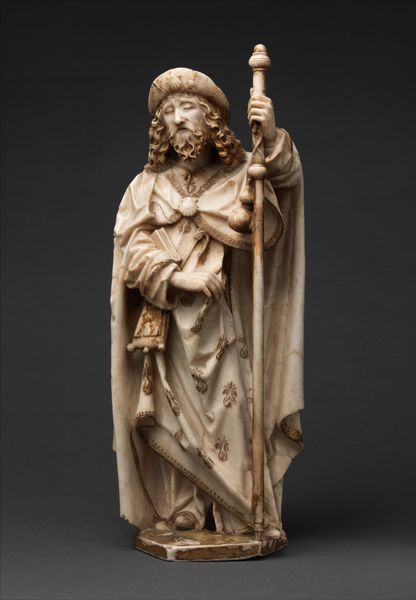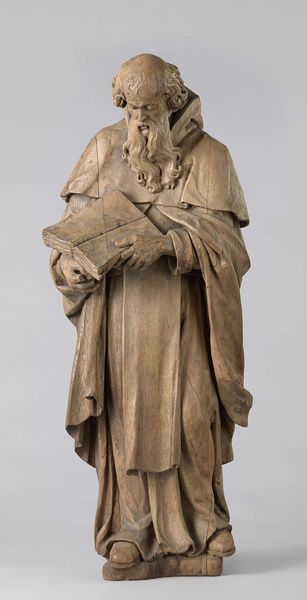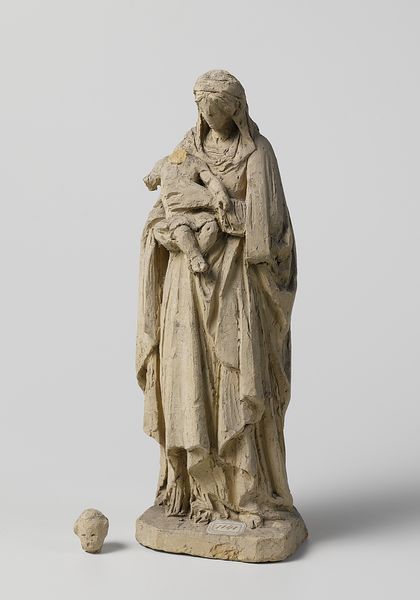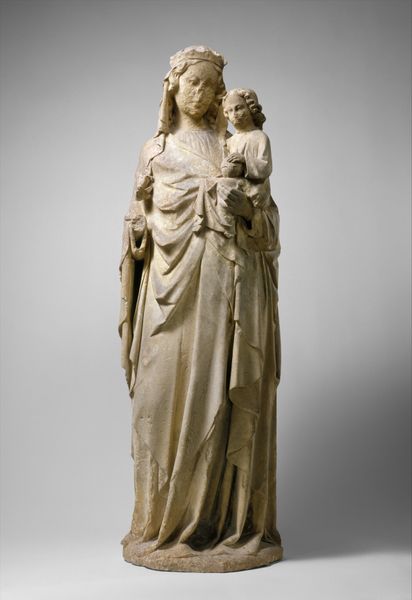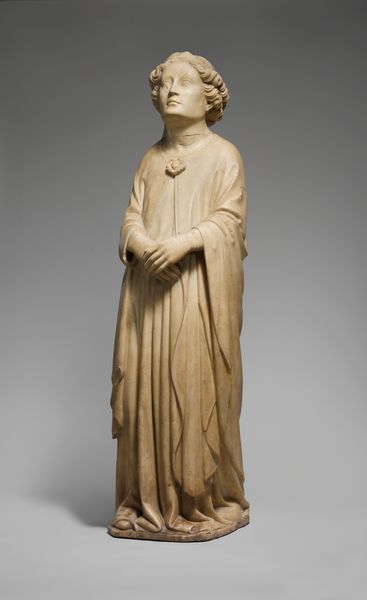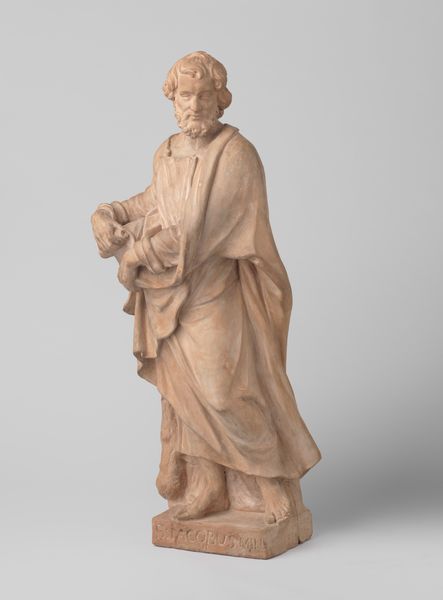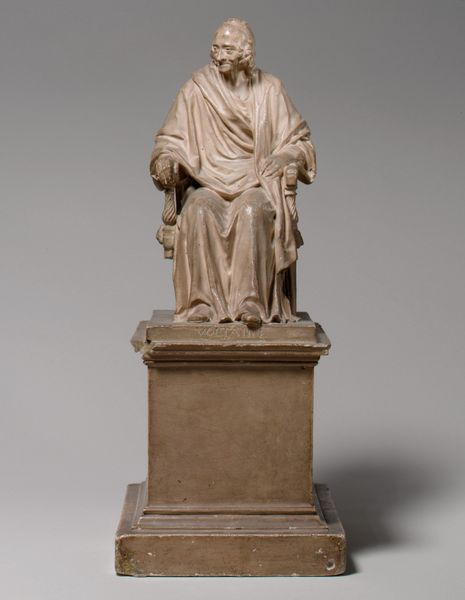
carving, sculpture, marble
#
portrait
#
medieval
#
carving
#
sculpture
#
figuration
#
sculpture
#
marble
#
medieval-art
#
statue
Dimensions: Overall: 29 x 9 11/16 x 7 1/4 in. (73.6 x 24.6 x 18.4 cm)
Copyright: Public Domain
Editor: Here we have "Saint James the Lesser," a marble sculpture crafted between 1495 and 1505 by Gil de Siloe. Currently residing at the Metropolitan Museum of Art, its detailed carving seems so serene, almost timeless. What can you tell me about how to interpret this work, particularly given the context in which it was made? Curator: Absolutely. This sculpture exists within a very specific socio-political landscape. How does the image of Saint James here speak to you? Notice his book and the staff. Do they symbolize power or something else entirely, given the complex role of the church in that era? Consider also, who was this *for*? Religious art often served to reinforce hierarchies. Editor: It does seem like a symbol of authority, especially with the book, perhaps a demonstration of knowledge and control. I suppose for me, its interesting the messages this artwork would share now versus then. Curator: Exactly! Think about the dynamics of power embedded within religious iconography. Medieval society was structured in a way that the Church played a critical role in not just the religious lives of people, but politics as well. The figures like Saint James were, in a way, idealized, even as it asked obedience of the population. The gaze of the figure - consider whose eyes they were meant to meet, and what response that gaze might evoke. Who did this version of piety leave out? Editor: So, it's a very deliberate representation of power, aimed at specific audiences within a highly structured social order. It prompts questions about inclusion and exclusion then, which continues to resonate now. I see it completely differently now. Curator: Indeed! And questioning those visual languages is what allows us to connect the artwork to broader questions around identity and its representations across history. It invites ongoing critique. Editor: It really does! Thanks for shedding light on this; it has been enlightening to analyze its historical and social implications.
Comments
No comments
Be the first to comment and join the conversation on the ultimate creative platform.
